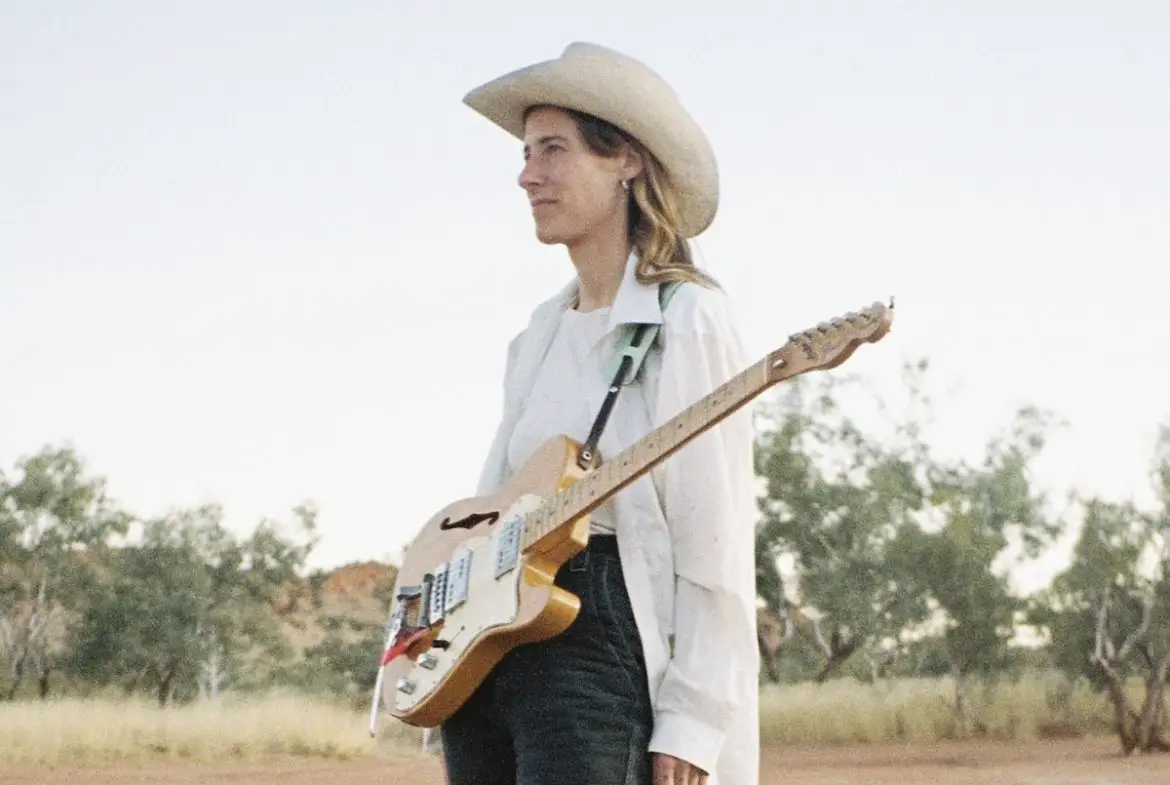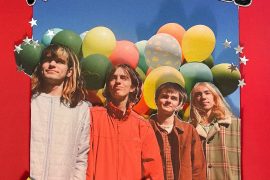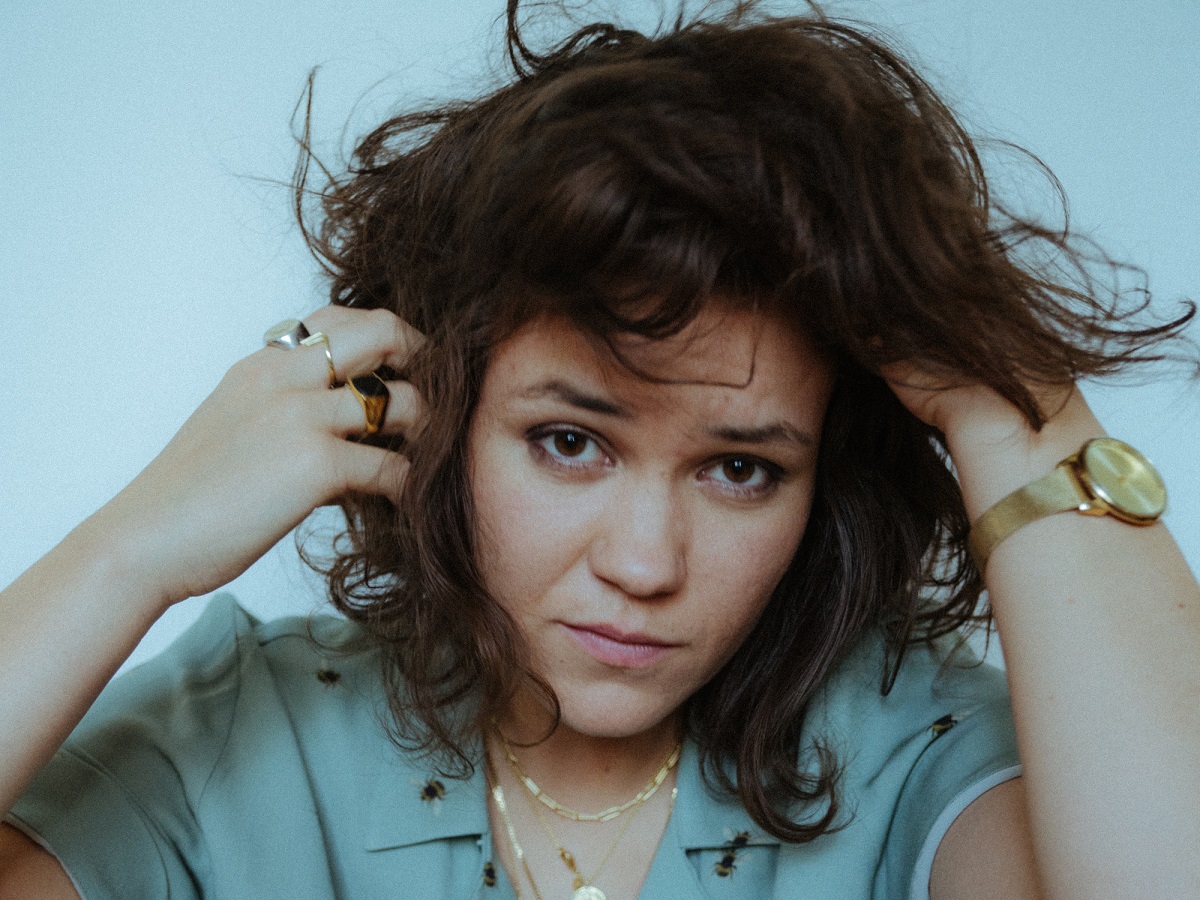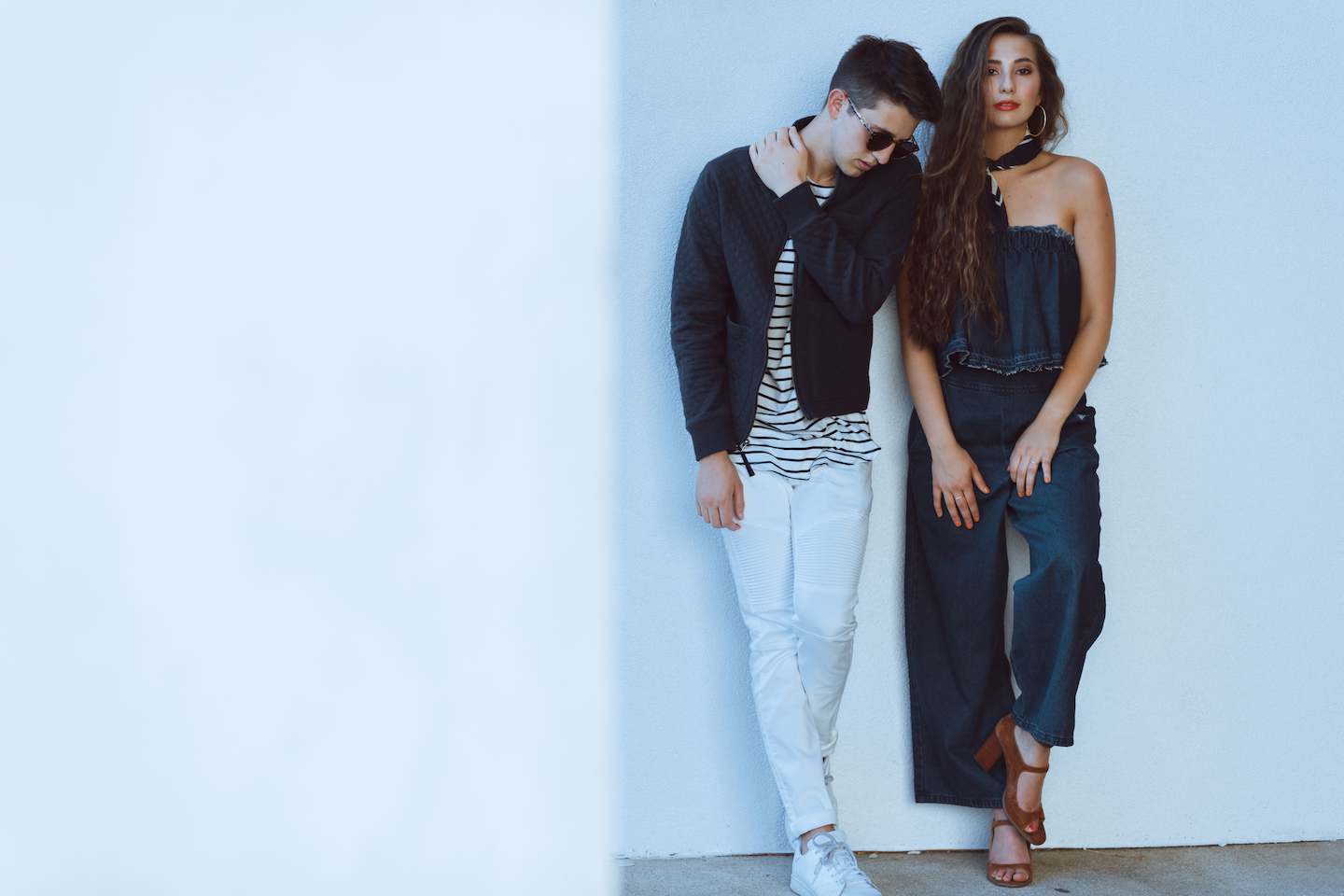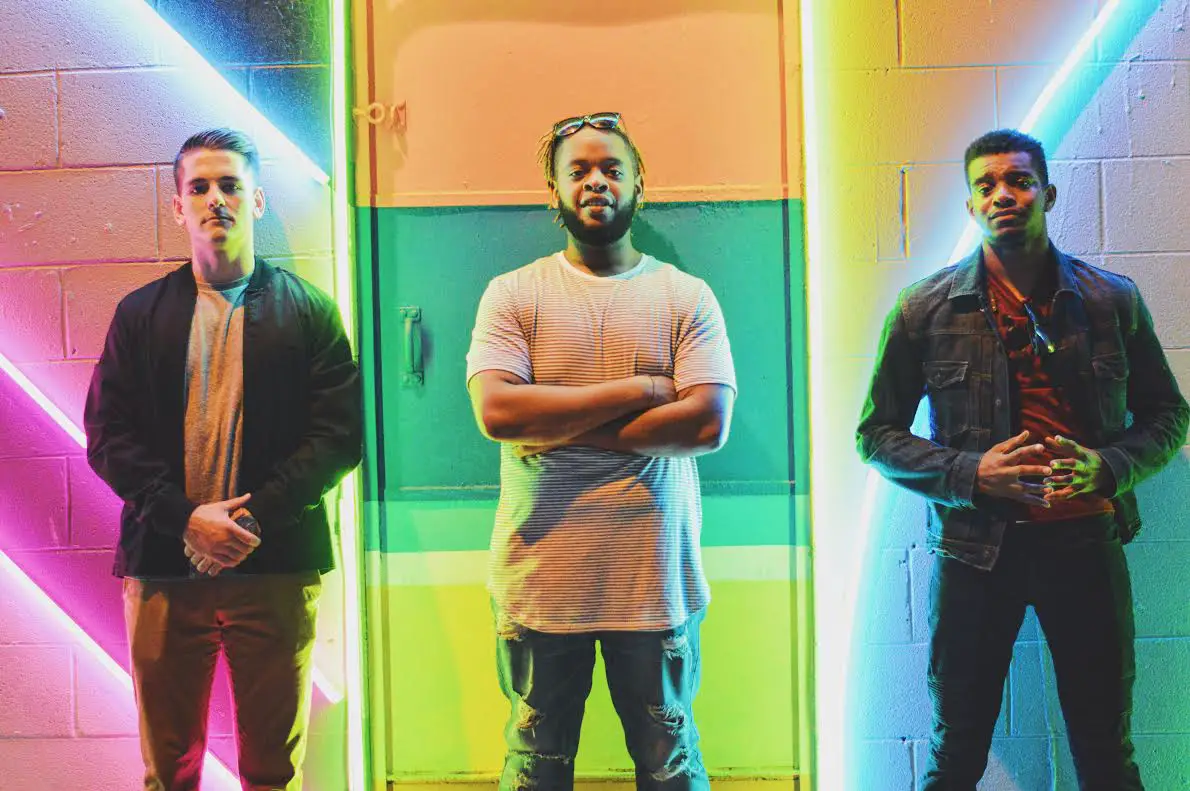Australian dream pop cowboy Workhorse dives into her dusty debut album ‘No Photographs,’ a wistful, warm, and utterly intoxicating exploration of existential grief, presence and purpose, and more.
Stream: ‘No Photographs’ – Workhorse
Who are we, and why are we? What do we mean to those around us now, and what will our existence mean once it’s over? Life’s big rhetorical questions don’t have any simple, easy answers, but there’s always something gained from dwelling in their vast, endless depths.
The same holds true for Workhorse’s debut album: You may come away with a sense of renewed self-awareness, a refreshed perspective, or a rebalancing of priorities and personal goals; but no matter what, this record is sure to stir the heart and move the soul. Wistful, warm, utterly intoxicating, Workhorse’s No Photographs explores existential grief through a turbulent and smoldering alt-country-meets-indie rock lens. Reflections on belonging, presence, connection, purpose, dissonance, individuality, longing, and more coalesce on an enthralling soundtrack that delves unapologetically into life’s (often dark) depths, basking in the throes of our mortal existence.
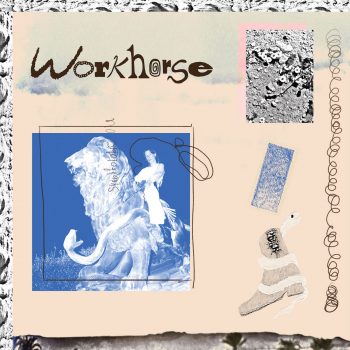
Released August 12, 2022 via Dinosaur City Records, No Photographs is at once haunting and soothing: A collection of intimate, intense reckonings with oneself and one’s surroundings that provokes a similarly visceral inward journey in all who listen.
Arriving five years after Workhorse’s debut EP No Sun, the sun-soaked No Photographs is an up-close and personal introduction to Workhorse’s principal singer/songwriter and multi-instrumentalist Harriet Fraser-Barbour.
Since founding the band in 2016, Fraser-Barbour has approached Workhorse as a vessel of cathartic self-expression, communal connection, and musical exploration.
“The earliest stages of this band were experimentations in the sense that it was my first time orchestrating or leading a band, and that was a learning process for me,” she explains. “I tried not to have expectations or preconceived ideas of how the songs might form with a band, but my guitar and songwriting style has remained pretty consistent, so I think the sounds you hear on the new album are just evolutions of sounds we were making from the start.”
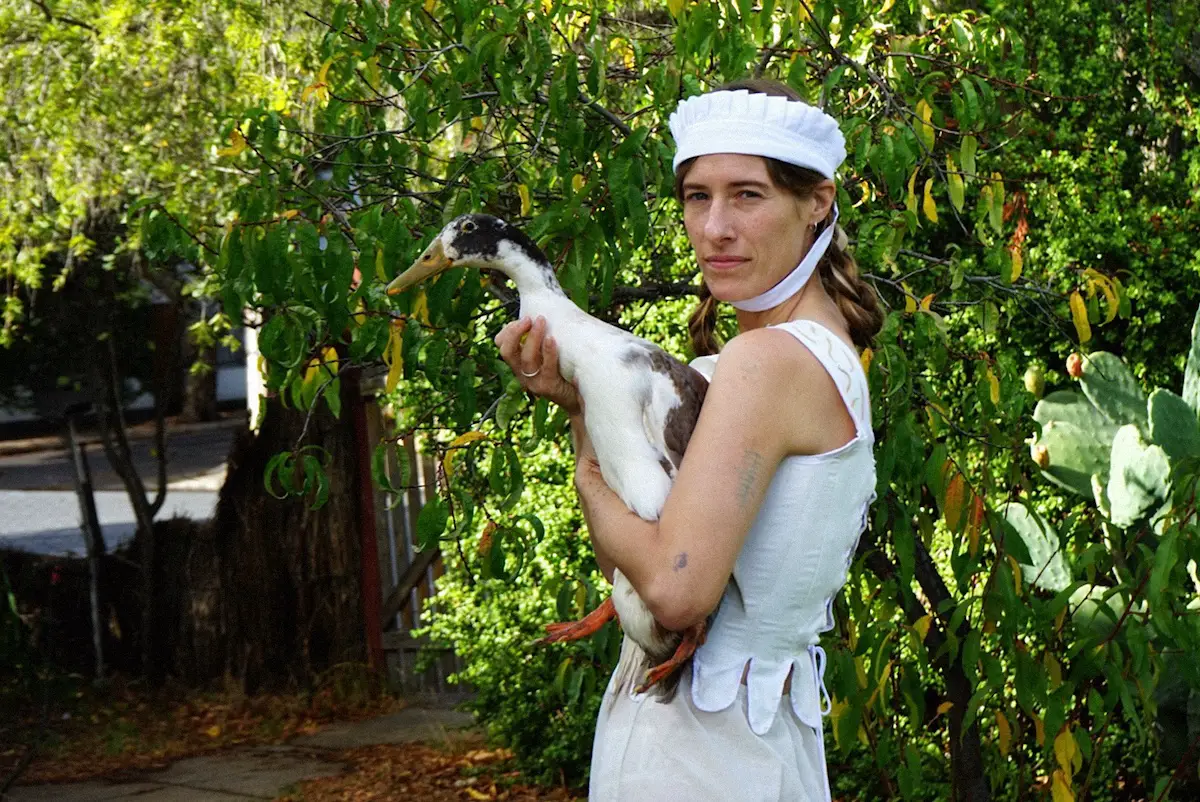
Those sounds embody a hazy, heated marriage of dream pop, alt-country, indie rock, folk and more; Workhorse is an entity unto itself, making music thoroughly distinct from peers in Adelaide, and indeed across the Australian continent.
Per Fraser-Barbour, both of Workhorse’s releases are about existential grief, although they approach that theme in distinctly different ways. “The first is an apocalyptic reference, mourning the decay of our planet, and the second is questioning the marks we leave behind or what remains from our life once we and those who remember us are gone,” she explains. No Photographs‘ songs are especially personal, and grapple with “longing, belonging, escape, platonic friendship, and romantic love.”
“The things I don’t have or the things I am lacking are the things I am more drawn to exploring when writing music. It doesn’t feel natural for me to pick up a pen and write a song about a great day or happy memory that I made, rather I’ll want to write about feeling loss or grief or loneliness.”
Perhaps the best word to describe No Photographs is “dusty”: At once insular and expansive, Workhorse’s dreamy music has a way of engulfing its audience in a kind of sonic and emotional haze. There’s an ever-present tension to these songs. As Trouble Juice‘s James Lynch thoughtfully wrote in a recent track-by-track album breakdown, No Photographs simultaneously sounds “excited, conflicted, and exhausted all at once.”
The album hits the ground running with “Chain,” a gritty, glistening, gently bruised song whose golden hues glow through angular, effected guitars, lilting violins, softly stirring vocals, and rich, resonant harmonies. Fraser-Barbour switches between singing “Think I need a chain so things just stay the same” and “Think I need a change, things just stay the same,” creating a compelling dissonance that builds into a wondrous, emotive storm.
“It’s a kind of flip-flopping between these states,” she reflects. “Feeling like things or a place is stagnant, craving change – and alternately feeling frustrated by the instability of a place. In my home town of Adelaide I often feel stuck between these two places. Frustrated by a small town mentality, and also frustrated by the constant exodus of friends moving to bigger cities.”
From there, standout tracks like “Dreamhorse,” the searing title track “No Photographs,” the aching “Mary Maiden,” and the churning “Violence” build out the album’s unique aural world as well as Workhorse’s powerful poetry. Fraser-Barbour was reportedly influenced by vast Australian landscapes, queer western films like Desert Hearts and Brokeback Mountain, apocalyptic dreams, and the sounds of Julee Cruise, Chris Isaak and Mazzy Star.
“My favourite place to listen to music has always been on a long drive, and ideally a road trip through the Australian countryside,” she says. “It’s easy to inflict a kind of cinematic quality to the passing landscapes with the windscreen or window frame acting as a camera frame. I often curate music to the kinds of landscapes I pass through, country music fits particularly well with the open fields and paddocks of rural Australia. Moody folk when the big grey clouds roll in. So this is what I imagine when making music. I think about what I would like to listen to if I was doing a long drive through the desert, with nobody but myself and my iPod or a mixed CD. And that’s the kind of music that Workhorse is.”
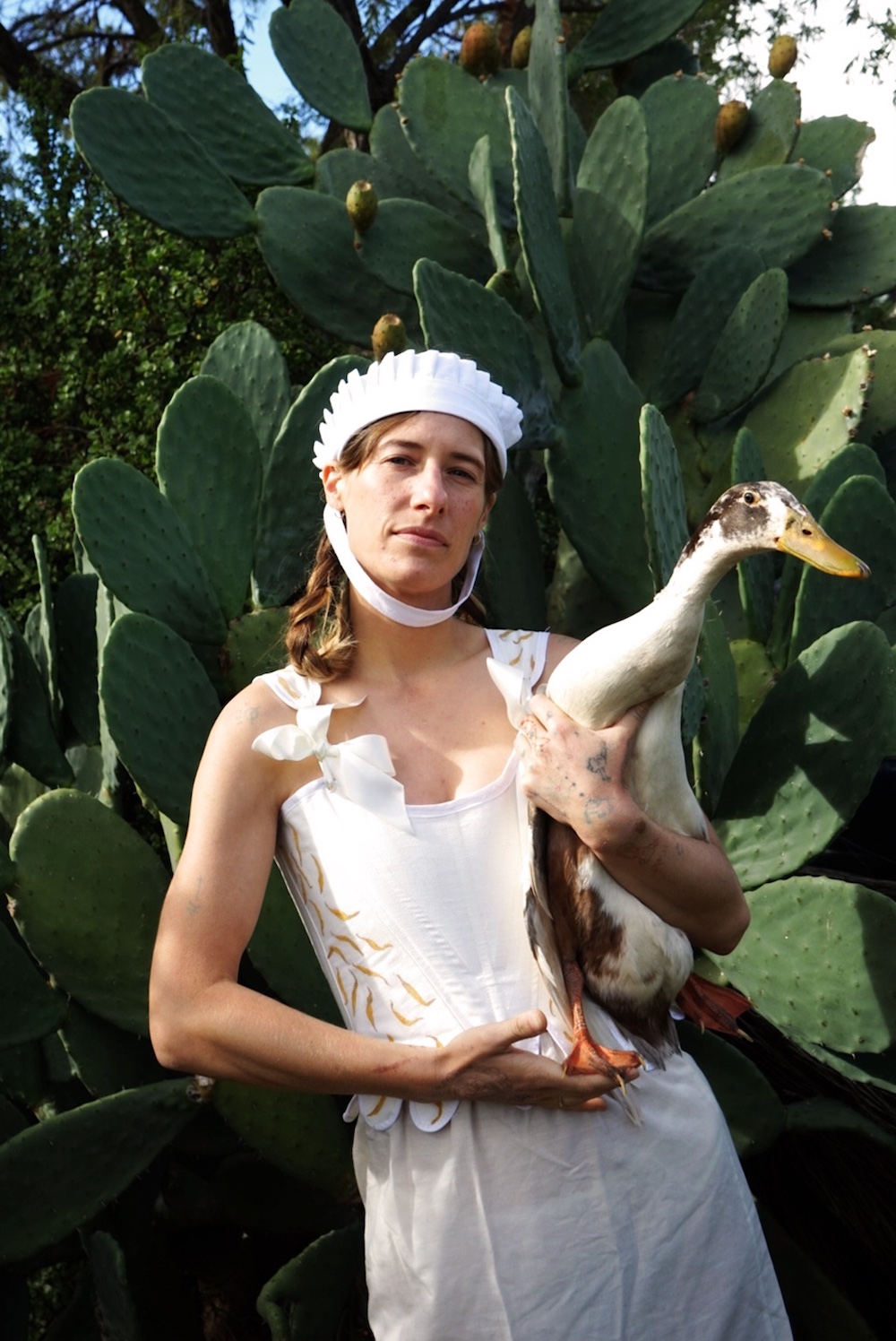
Is Workhorse a 21st Century Australian cowboy?
It’s probably not our place to say, but she certainly sounds like one. Ultimately, her debut album succeeds at evoking dreams of vast, sweeping landscapes; of hot, sun-soaked days and warm, moonlit nights; of the smokey haze in-between the light and the darkness, presence and absence, life and death, present and past.
“I hope listeners can find a similar sense of therapeutic release or inner calm that I feel when I listen to these artists,” the artist ultimately shares. “There might be elements of sadness but ultimately there’s a feeling of acceptance or even hope at the end of it all.”
No Photographs works through a common pool of existential grief and anguish, ultimately shining with a comforting, cathartic sense of revival and renewal. It’s a hopeful record; through the darkness, we persevere; we soldier onward with the weight of life’s biggest questions saddled on our shoulders.
No Photographs is out now via Dinosaur City Records. Dive deeper into Adelaide’s Workhorse and this beautifully dusty debut album in our interview below!
— —
:: stream/purchase No Photographs here ::
Stream: ‘No Photographs’ – Workhorse
A CONVERSATION WITH WORKHORSE
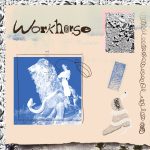
Atwood Magazine: Harriet, it's great to meet you and thanks for chatting! To get things started, how did you come upon the name Workhorse, and has this name taken on any new meanings for you over these past six years?
Workhorse: I think when I initially chose the name, it was just a word that stuck. I don’t remember what any of the other possibilities were, but I liked the imagery that this phrase brought to mind, of either a literal horse, perhaps pulling a cart – or of a wooden trestle structure used in carpentry, also known as a sawhorse. Both being something simple or humble, but reliable.
Did you know from the offset what kind of music you wanted to be making, or has it been a process of constant discovery and exploration?
Workhorse: The earliest stages of this band were experimentations in the sense that it was my first time orchestrating or leading a band, and that was a learning process for me. I tried not to have expectations or preconceived ideas of how the songs might form with a band, but my guitar and songwriting style has remained pretty consistent, so I think the sounds you hear on the new album are just evolutions of sounds we were making from the start.

Who are some of your musical inspirations, and what do you hope listeners come away with from listening to your music?
Workhorse: I love musicians who create an immersive kind of world. Or an atmosphere that touches on something deep and mysterious within you. Haunting melancholy frequencies or moody melodies, lots of old folk do this like Sibylle Baier and Vashti Bunyan, and then more contemporary artists like Julee Cruise or Mazzy Star who use these atmospheric layers to lull you into a sedated state.
I hope listeners can find a similar sense of therapeutic release or inner calm that I feel when I listen to these artists. There might be elements of sadness but ultimately there’s a feeling of acceptance or even hope at the end of it all.
So first we had No Sun, and now we have No Photographs. What do you think it is about these negations that keeps you coming back to them?
Workhorse: That’s a really good question. I think very generally speaking, the things I don’t have or the things I am lacking are the things I am more drawn to exploring when writing music. It doesn’t feel natural for me to pick up a pen and write a song about a great day or happy memory that I made, rather I’ll want to write about feeling loss or grief or loneliness. Both No Sun and No Photographs are about existential grief. The first is an apocalyptic reference, mourning the decay of our planet, and the second is questioning the marks we leave behind or what remains from our life once we and those who remember us are gone.
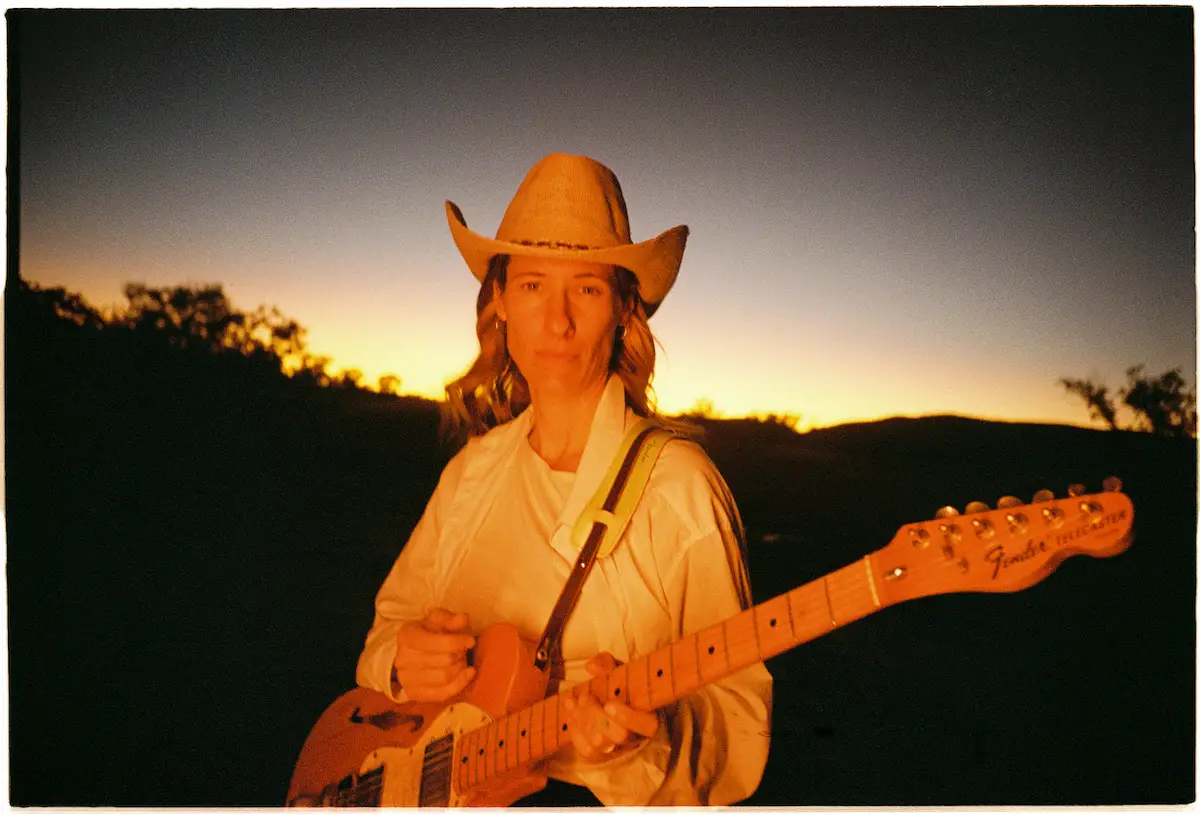
That's absolutely fascinating. Speaking of, congratulations on your debut LP! No Photographs was a long time in the making. Can you share a little about the story behind this record, and what it means for you?
Workhorse: Thank you! No Photographs was mostly an opportunity for myself to test my skill set and experiment with bringing ideas into fruition on my own. The band I had been playing with became occupied with other life things so we had a bit of a long unofficial hiatus, that added with COVID lockdowns and no live gigs kind of gave me the space and time to really just have the project all to myself without the expectations of others – and so No Photographs was born.
How do you feel No Photographs (re)introduces Workhorse and captures your artistry today?
Workhorse: I think the album is just an evolution on themes and style that I was already exploring on our earlier EP – but this time more refined. I really gave myself permission to trust in my visions and follow my intuition, and playing all the instruments myself allowed me to guide each individual part in order to capture those visions. I think it’s a very simple album, made up of very simple songs – but the ‘artistry’ is in all the various layers that accumulate to create a sonic landscape.
I read that you cite influence from “vast Australian landscapes,” and I was wondering if we could go deeper into that theme: Can you share more about how that influenced your music?
Workhorse: My favourite place to listen to music has always been on a long drive, and ideally a road trip through the Australian countryside. It’s easy to inflict a kind of cinematic quality to the passing landscapes with the windscreen or window frame acting as a camera frame. I often curate music to the kinds of landscapes I pass through, country music fits particularly well with the open fields and paddocks of rural Australia. Moody folk when the big grey clouds roll in. So this is what I imagine when making music. I think about what I would like to listen to if I was doing a long drive through the desert, with nobody but myself and my iPod or a mixed CD. And that’s the kind of music that Workhorse is.
You've also mentioned queer western films as another major source of inspiration; did you grow up on these films, and what role do they play for you and your art?
Workhorse: I definitely didn’t grow up with these films, and to be honest I can only name a few – but most of all the film Desert Hearts by Donna Deich has been a big inspiration to me, and I only found that later in life. I think it reflects on lots of similar themes that I am also grappling with in Workhorse. Of longing, and belonging, and escape and of platonic friendship and romantic love.
I particularly fell in love with this album's opener, “Chain.” “I think I need a change, 'cause things just stay the same...” Would you mind sharing more about this song and its significance for you?
Workhorse: For the most part I am singing ‘Think I need a chain’ – so things just stay the same’ but occasionally the backing harmonies are singing, ‘Think I need a change, things just stay the same’ – so it’s a kind of flip-flopping between these states. Feeling like things or a place is stagnant, craving change – and alternately feeling frustrated by the instability of a place. In my home town of Adelaide I often feel stuck between these two places. Frustrated by a small town mentality, and also frustrated by the constant exodus of friends moving to bigger cities.
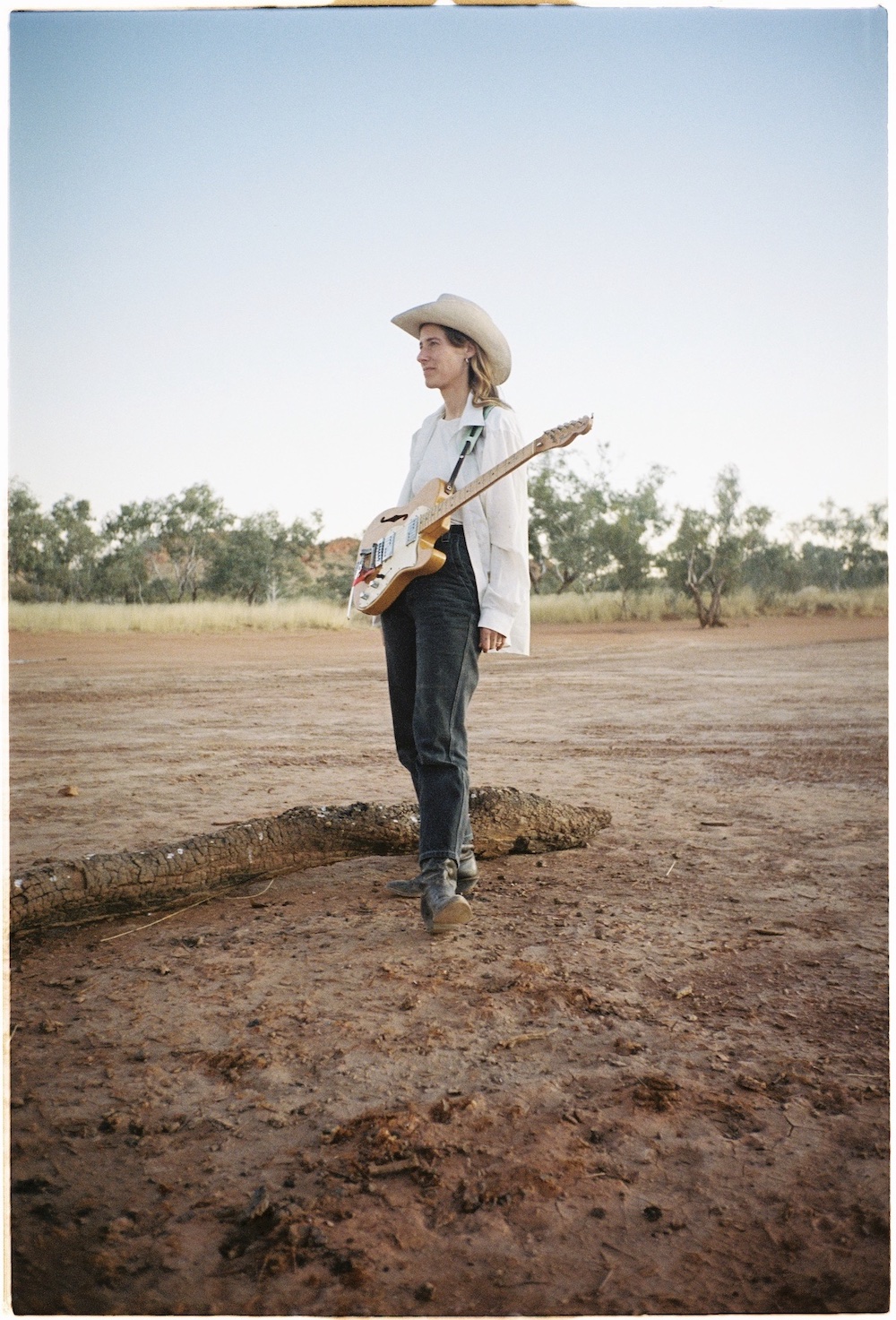
Do you have any definitive favorites or personal highlights you hope folks pay special attention to?
Workhorse: I think my favourite song on the album is the song ‘Mary Maiden’ – and maybe that’s because it’s a cover, so I’m less self critical of the lyrical content. It’s a cover of an old folk song that Joan Baez sings called “River in the Pines,” and I think it’s got a kind of hypnotic rhythm to it.
Similarly, as a lyrically forward artist, do you have any favorite lyrics in these songs?
Workhorse: I think the chorus of “Dreamhorse” is a favourite. “What a proud dreamhorse, be pulling me through, far less lonely than a fire is cool.”
What have you taken away from creating No Photographs and now putting it out?
Workhorse: Making an album alone is fun, time consuming and expensive, but most of all very satisfying and rewarding!
Lastly, I always like to pay it forward. Who are you listening to these days that you would recommend to our readers?
Workhorse: There’s a new song by Estonian band Holy Motors which is a cover of The Carpenters song “Superstar” which has that dreamy Badalamenti / Cowboy Junkies kind of western shoegaze sound that I love!
— —
:: stream/purchase No Photographs here ::
Stream: ‘No Photographs’ – Workhorse
— — — —

Connect to Workhorse on
Facebook, Bandcamp, Instagram
Discover new music on Atwood Magazine
? © Jordanne Chant
:: Stream Workhorse ::

